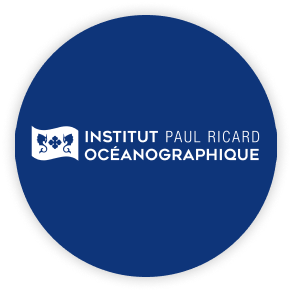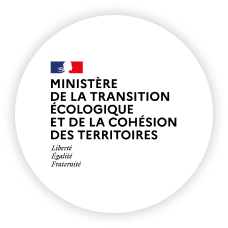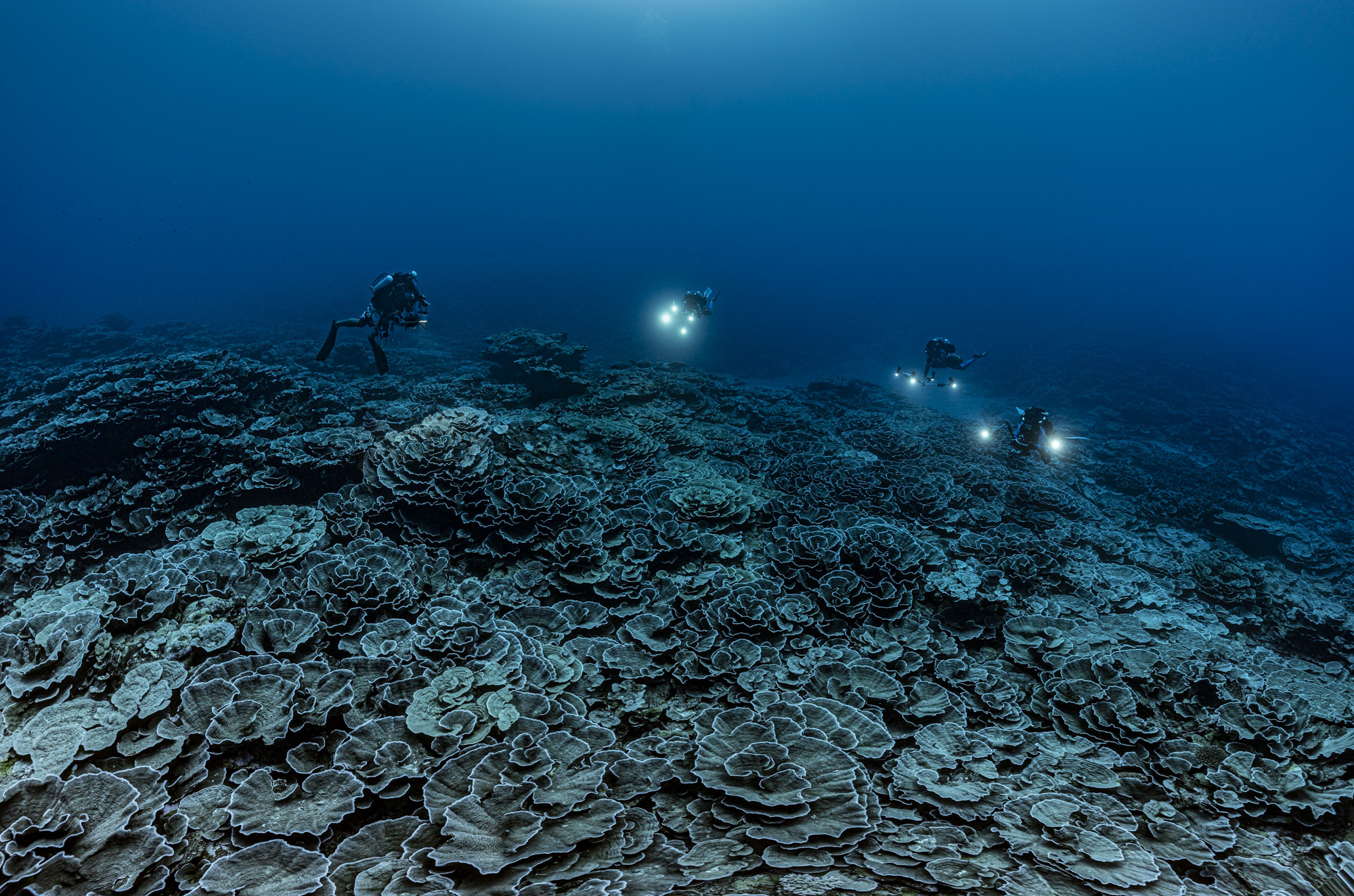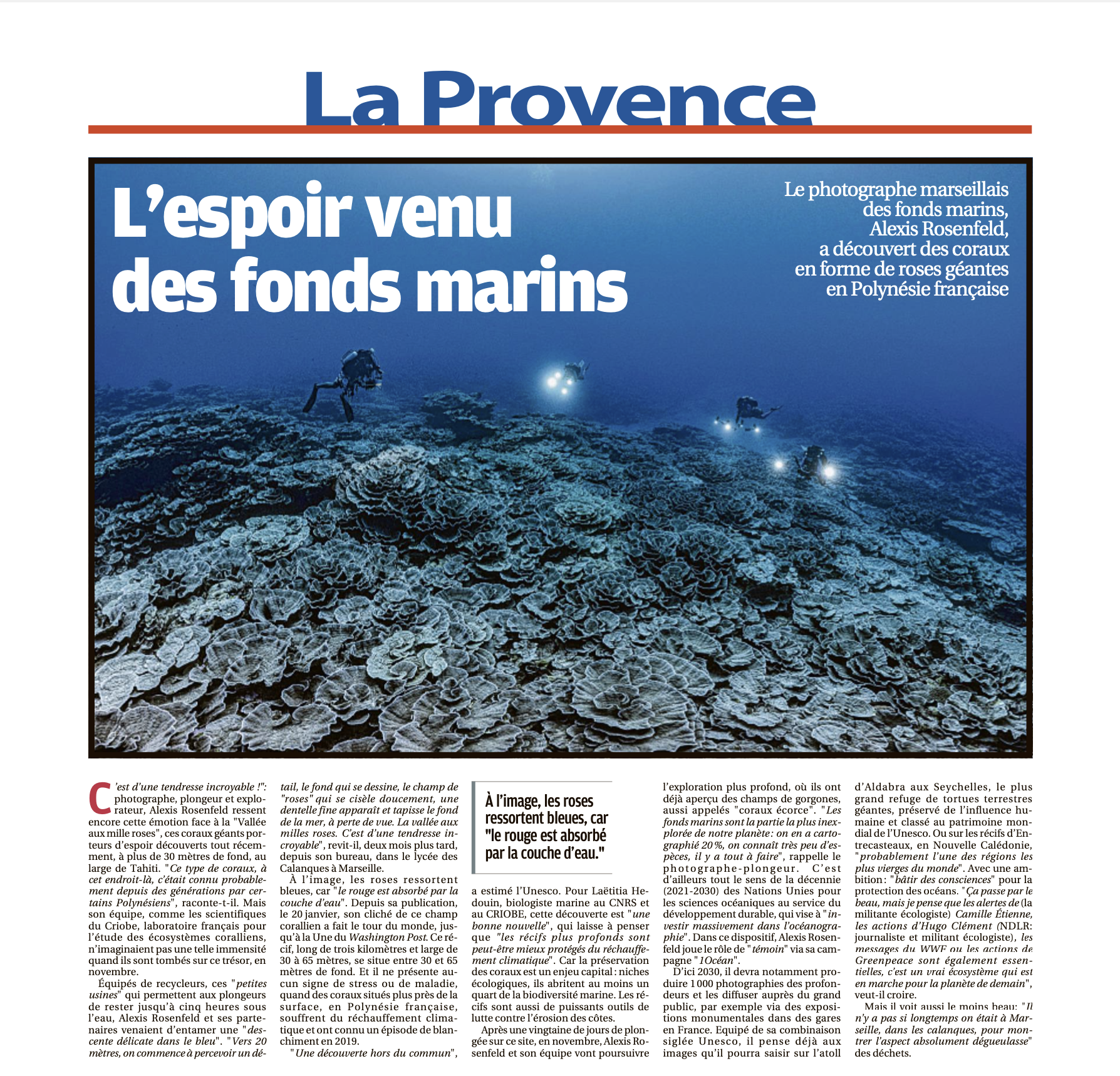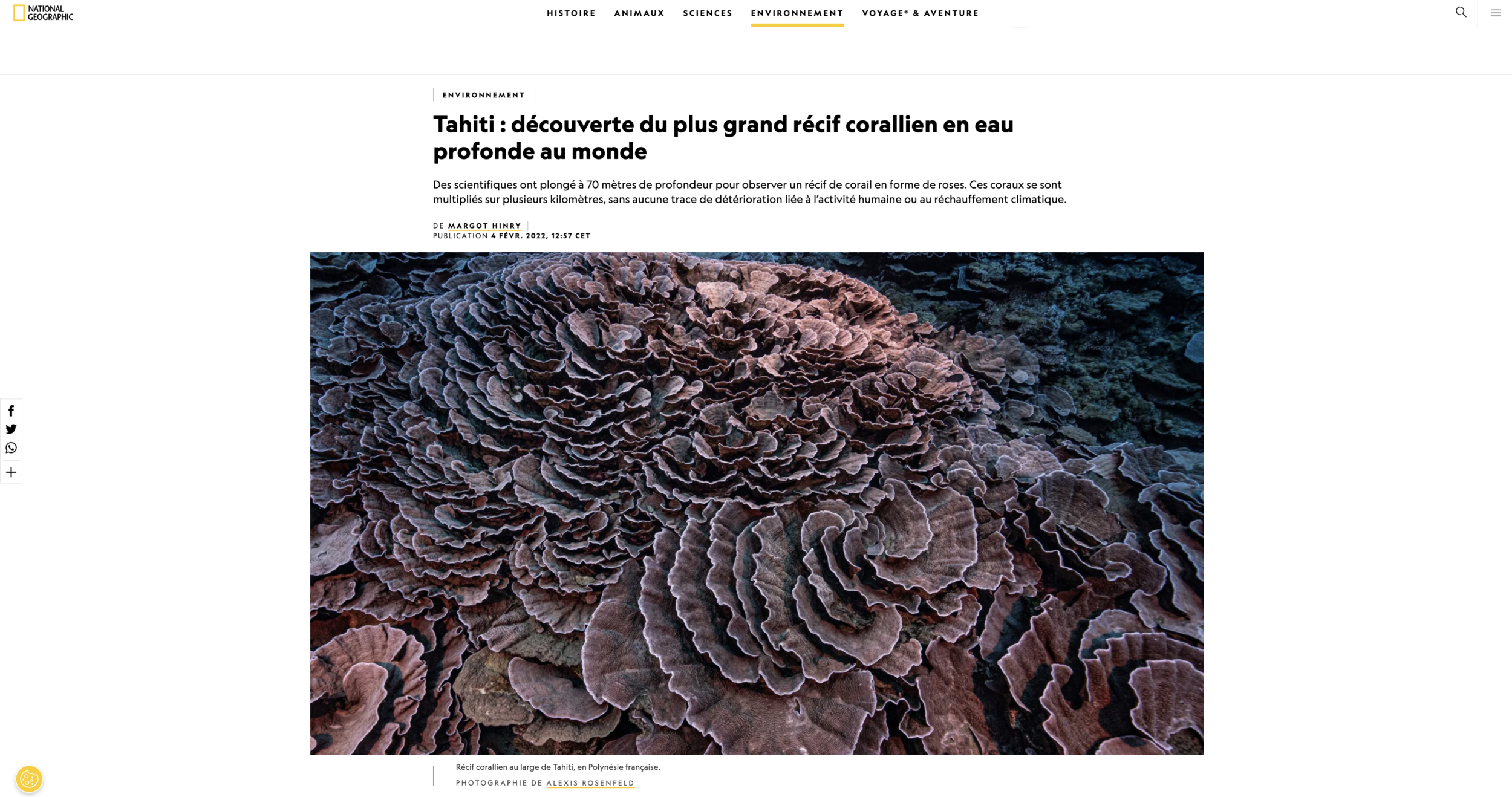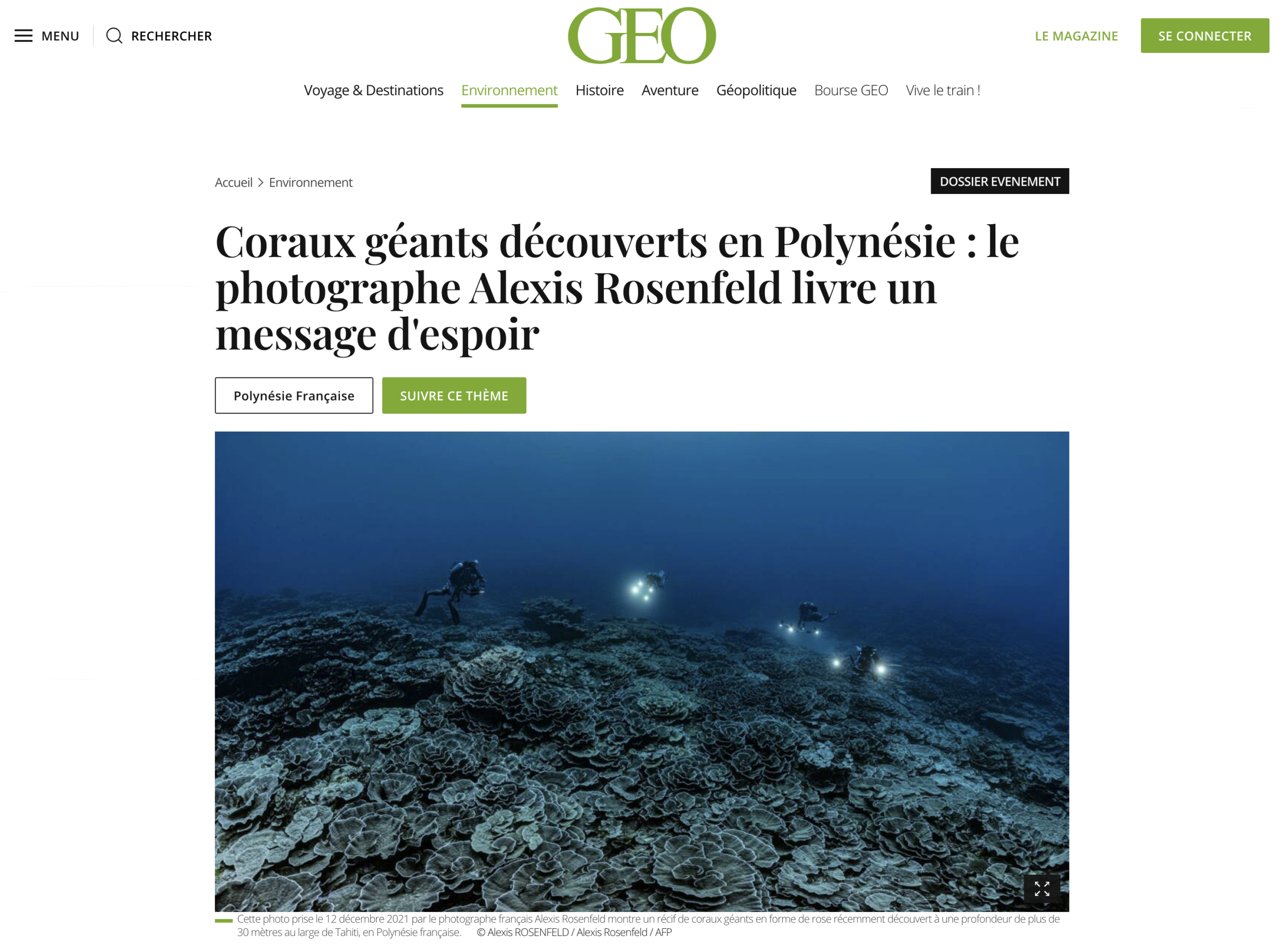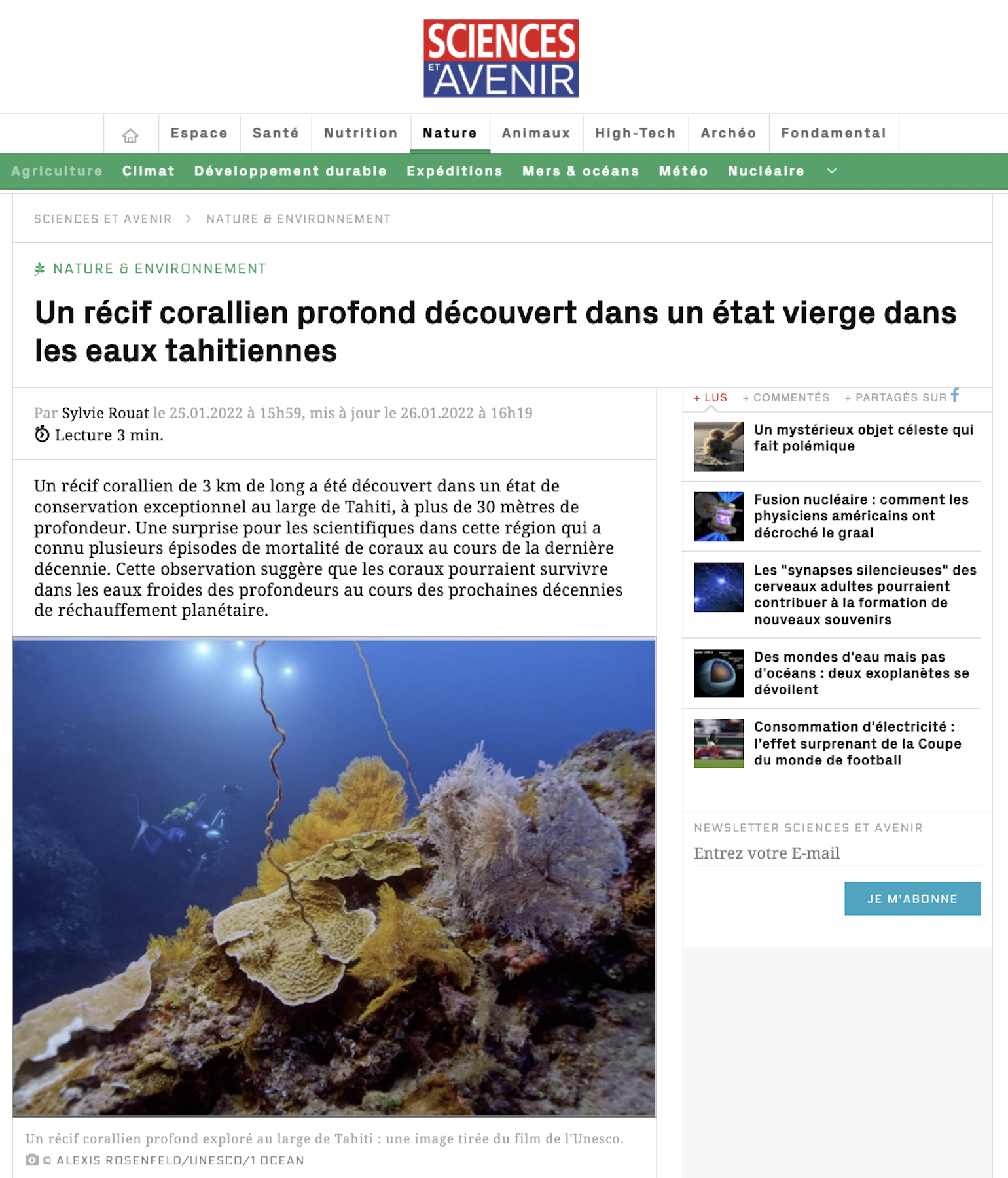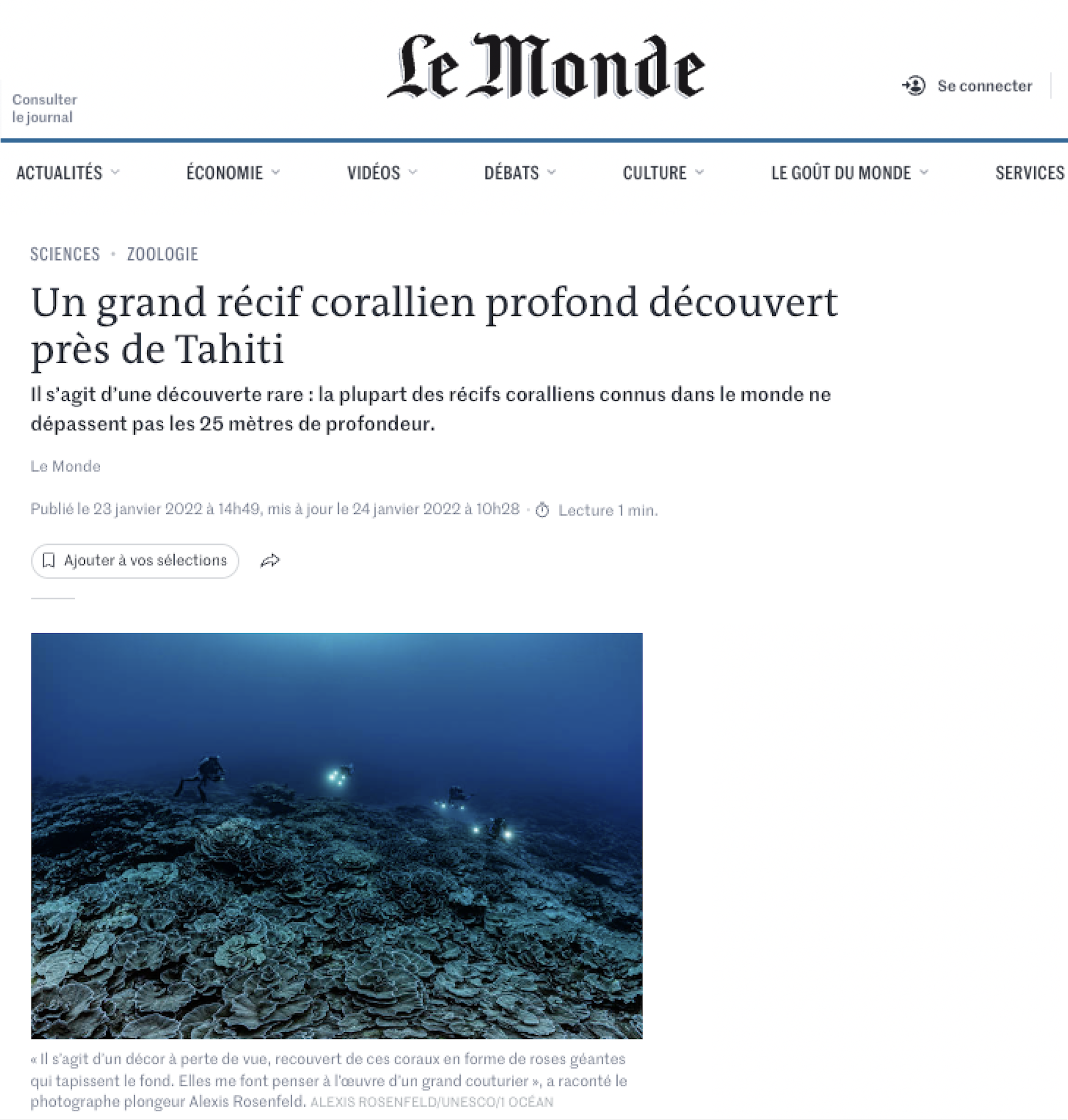The Valley of a Thousand Roses
Coral reefs
In French Polynesia, one of the world's largest deep reefs.
As part of a 1 OCEAN / UNESCO mission, a team led by photographer Alexis Rosenfeld and scientist Laetitia Hédouin carried out several large-scale dives on a deep coral reef in the heart of the Pacific. With its exceptionally high coral cover, this site is of major importance to researchers: it could be one of the world's largest deep reefs, in an unrivalled state of conservation.
One of the world's most extensive deep reefs
"It'sa setting as far as the eye can see, covered with these giant rose-shaped corals that line the bottom. They remind me of the work of a great couturier. "describes Alexis Rosenfeld. Inevitably, this unique reef seems to inspire an indescribable sense of magic in those who observe it.
Since November 2021, the 1 OCEAN team has been leading an exploration mission in French Polynesia. Scientists from CNRS - CRIOBE accompanied the divers in their search for exceptional sites, still preserved from environmental threats and anthropic pressure.
During this exploration mission, divers and scientists made several dives on an exceptional site: a deep reef (35-80 meters) whose exact limits have yet to be discovered. The current state of research indicates an extension of almost three kilometers, but only a tiny part of the coastline was explored during this expedition. If the scientists' estimates prove correct, this could be one of the world's largest "pristine" deep coral fields.
An exceptional scientific discovery
For the first time, researchers came to observe this extraordinary landscape. For Laetitia Hédouin, the site could prove invaluable in the quest for a better understanding of coral systems: "It's quite exceptional to observe this coral field as far as the eye can see, at these depths, with specimens that can reach two meters in diameter, and which show no signs of stress or disease."
Indeed, while it's common to find immense reefs a few meters below sea level, such expanses are rarer at depth. Coral is an animal that lives in symbiosis with zooxanthellae, a micro-algae that lives in its tissues. Zooxanthella provides 90% of the energy coral needs to live. The algae produces this energy through photosynthesis. It therefore needs light above all, which is why most corals live in areas close to the surface.
However, corals are heat-sensitive animals, and climate change represents a major threat to these surface reefs, which are particularly exposed to temperature variations. Around a quarter of the world's coral reefs have already suffered irreversible damage, and two-thirds are seriously threatened. Ultimately, coral reefs as we know them could disappear.
Deep down, however, their fate could be different. For Laetitia Hédouin, "the size of the coral colonies and their virtually intact state of health suggest that they have been spared anthropic pressure in recent decades. This discovery confirms that we have a very fragmented view of coral reefs. There are unique reefs in the depths, still untouched by environmental threats, which could play a key role in the future."
This mission was made possible thanks to the support of UNESCO, but also to the involvement of numerous partners and specialists. Of particular note was the involvement of Gilles Siu, engineer at CRIOBE, who informed us of the existence of this absolutely exceptional site, and without whom this exploration mission would not have been possible.
This mission was carried out with the support of our partners.
Would you like to join us?









